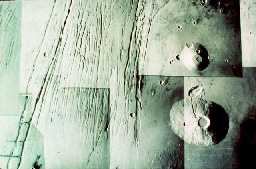This is an image of some Martian volcanoes.
Click on image for full size
Image from: NASA
The History of Martian Volcanism
During its earliest history, Mars was bombarded with asteroid-like boulders leftover from the formation of Mars. The impacts of these boulders caused the surface of Mars to become warm enough for continents to drift, just as they do on Earth to this day. What is now the highlands of Mars may have once been a supercontinent which froze in place, in the southern hemisphere, when the lithosphere became immovable.
After the crust became too thick to move, a warm bubble of material, rose from the deep interior of Mars and created the Tharsis Bulge and the volcanoes. The volcanoes poured out a new surface over the lowlands of Mars.
This period of volcanism is what created the Tharsis Bulge and the volcanoes. The volcanoes poured out a new surface over the lowlands of Mars.
After this period however, all volcanic activity on Mars ceased. Today there is neither continental drift nor active vocanoes on Mars.
You might also be interested in:
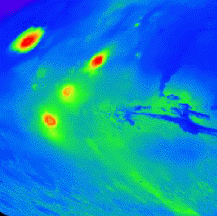
On this map of Mars, the lightly cratered Tharsis Ridge is shown, as well as the heavily cratered Martian highlands (near the bottom of the picture), and Valles Marineris to the right. The volcanoes are
...more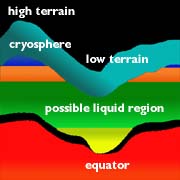
On Mars, the water is trapped, frozen, within the ground. Nevertheless, there is evidence for running water on Mars. When the water is melted and released to the surface, it will run from higher ground
...more
The drawing shows a crossection of the crust, and the unusual altitude variation of the Martian surface. The figure illustrates the depth of frozen ground at various latitudes, called the cryosphere. The
...more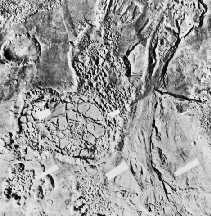
Separate from the Martian outflow channels, or the river valley networks, are large Martian lakes (600 km, or ~1000 miles across) which exhibit evidence of a periodic and catastrophic release of water
...more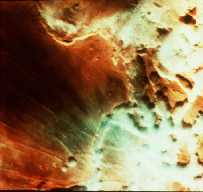
This is an image of fog in a Martian canyon. The presence of fog provides evidence of water, and a water cycle on Mars. More fog has been seen in images returned by Mars Global Surveyor of the south polar
...more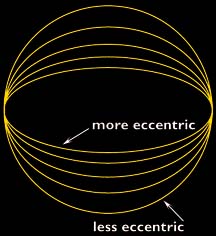
The Martian climate is more influenced by the shape of the Martian orbit than the climate of the Earth is influenced by the shape of the Earth's orbit. The orbit of Mars is more oval-shaped than that
...more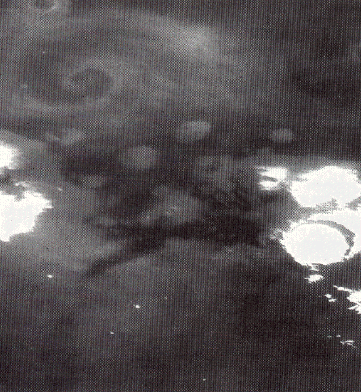
This is an image of a storm moving across the Martian terrain. The camera is looking down upon the storm and the storm front forms a spiral pattern, the same way terrestrial storms are presented on the
...more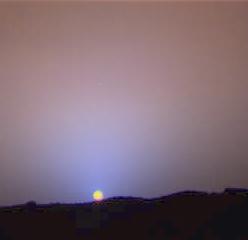
This is image of a Martian sunset illustrates just how thin the Martian atmosphere is. The terrestrial "blue sky" comes about because molecules of the atmosphere scatter sunlight. In this image, the Martian
...more


